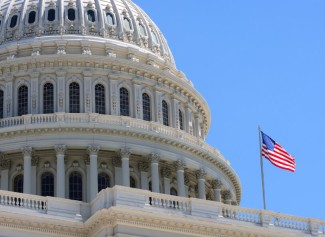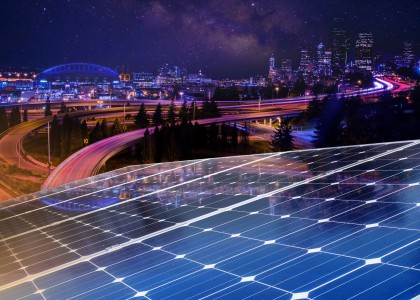As we recently noted, President Joe Biden’s proposed jobs and infrastructure plan includes unprecedented investments to address climate change, in part through energy efficiency. So far, the proposal is high level, with many details still to be spelled out. Such details will be important to set the United States on a course to meet climate targets as well as economic and equity goals. As these details are developed, we recommend the plan include several key programs to save energy and money while reducing emissions. Four important ones are weatherizing more low- and moderate-income homes, incentives to replace diesel trucks with electric ones, incentives to use energy management in factories, and funding for scaling up transformative industrial technologies.
On Earth Day, April 22, the president is convening a summit at which the administration is likely to announce a new U.S. greenhouse gas (GHG) emissions goal. Media reports suggest that the new goal is likely to be around a 50% reduction in GHG emissions by 2030, relative to 2005 levels. To help achieve these ambitious reductions, the administration and Congress should include the following measures in the infrastructure package.
Buildings
The Biden administration has proposed to build, preserve, and protect more than 2 million homes and commercial buildings. This includes building new affordable housing, rehabilitating public housing, renovating schools, and other initiatives for which details are not yet known. All new homes and major renovations should be built to high efficiency standards to avoid locking in energy waste and high carbon emissions.
In addition, we recommend a major investment in energy improvements, especially for affordable housing: a large increase in the number of low-income housing units weatherized through the Weatherization Assistance Program, funding the Hope for Homes initiative to retrofit other homes (including doubled incentives for moderate-income families), and funding the Green, Resilient, Efficient, and Affordable Homes for Tenants (GREAHT) program for multifamily housing developed jointly by ACEEE and the National Housing Trust.
Overall, we suggest retrofitting at least 20 million housing units over 10 years. To lay the groundwork for long-term decarbonization efforts, we recommend providing incentives for high-efficiency electric and gas heat pumps and for constructing highly efficient homes and buildings that are zero-energy ready.
Transportation
The infrastructure plan includes large investments in public transit, the U.S. rail system, electric vehicles (EVs) and EV charging infrastructure. These incentives should include replacing highly polluting diesel trucks with electric and fuel-cell medium- and heavy-duty trucks. A variety of electric trucks are now entering the market and incentives could help them establish a foothold. In addition, while President Biden has committed to the construction of 500,000 EV charging stations, investments in charging infrastructure will need to be scaled up even further to achieve his ambitious GHG and EV deployment targets. In particular, bus, truck, and other fleets need assistance with installing chargers and associated power grid equipment.
Industry
The president’s proposal calls for research and development (R&D) and other investments to revitalize manufacturing. It includes upgrading America’s research infrastructure, advancing U.S. leadership in critical technologies, developing new methods for reducing emissions and building climate resilience, and retooling and revitalizing American manufacturers and small businesses. Details are not yet available.
As part of these initiatives, we recommend including three proposals that ACEEE has developed. We explain our proposals in fact sheets published today:
1. enhancing energy management at small, medium, and large factories.
2. co-funding the first three commercial-scale installations of transformative carbon-reducing industrial technologies.
3. funding a competitive solicitation to assist regional manufacturing clusters in addressing common supply chain and decarbonization needs.
Power Sector
The infrastructure proposal includes an Energy Efficiency and Clean Energy Standard to reduce power sector GHG emissions to approximately zero by 2035. This will result in large energy savings and emissions reductions; we strongly support such a standard. In our view, the standard needs to build on decades of success with state energy efficiency requirements, but working out the details and building political support will take effort and time.
The Path Forward
House Speaker Nancy Pelosi (D-CA) has said that she wants the House of Representatives to pass a bill by July 4th. Rep. Peter DeFazio (D-OR), chair of the House Committee on Transportation and Infrastructure, has said he wants to develop the transportation sections of a bill in May. Although Democrats are hoping to pass bipartisan legislation, the Senate parliamentarian has indicated that senators can use the budget reconciliation process to pass further tax and spending legislation with only 50 votes. ACEEE has begun an analysis of the energy, GHG, and jobs impacts of various provisions up for consideration, which will help inform discussions on the infrastructure package. Stay tuned for this analysis and associated blog post.



